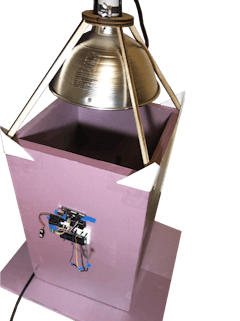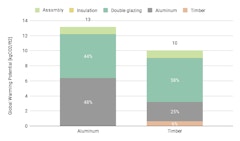
16 results
-
 Buildings have a considerable impact on the environment, and it is crucial to consider environmental and energy performance in building design.…
Buildings have a considerable impact on the environment, and it is crucial to consider environmental and energy performance in building design.… -
Evaluating The Environmental Performance Of Stick Curtain Wall Systems
- Paper by Dima Othman, B.A.Ing., M.Eng., LEED AP Daniel Arztmann, Dipl.-Ing., M.Eng., EFN, FTI Professor for Façade Construction, Technische Hochschule Ostwestfalen Lippe (TH-OWL) Head of Building Physics,
The construction industry is one of the greatest sources of pollution, where 39% of global energy-related carbon emissions are attributed to… -

Envelope For Service
- Paper by Annalisa Andaloro, Miren Juaristi, Stefano Avesani, Giulia Santoro, Matteo Orlandi,
Envelope-for-Service (E4S) is a novel business model developed with the aim of converting the building façade from a traditionally traded good to a… -

Infinite Panel System
- Paper by Mike Ryan, Director of Product Development Facades Division Brian Stern, Regional Energy Director Michael Adams, Senior Energy Analyst
Today, building facades are expected to do much more than merely provide shelter, which is driving the need for higher performing envelope solutions.… -

Establishing a Life Cycle Assessment Methodology for Innovative Facade
- Paper by Vikki Lew,
Life cycle assessment was introduced in the 1970s as an analytical tool to quantify the environmental impact of a product, process, or service.… -

Build Test Iterate Repeat
- Paper by Elizabeth L McCormick, RA, CPHC, LEED AP
The global increase in atmospheric temperature rise combined with the rapid growth of previously underdeveloped climate zones presents a growing need
-

Bringing an Icon Into the Future: Willis Tower
- Paper by Stephen Katz, Technical Director
Few buildings are as iconic as Willis Tower. Generations of Chicagoans have a collective memory of this building playing a role in their entire… -

Academic Wood Tower Choreography
- Paper by John Peterson OAA FRAIC LEED AP BD+C · Leland Dadson OAA CPHD
With an ever-growing interest in mid- and high-rise mass timber construction, this paper highlights the insights and lessons learned across global
-

Passive House Facade Design and Construction
- Paper by Louis Koehl, AIA, CPHD, Project Architect
Buildings account for over 40% of global emissions (GlobalABC, 2018). Growing populations and higher standards of living are increasing pressure on… -
Facade & ESG
- Paper by Vikki Lew,
In 2023, the International Sustainability Standards Board (ISSB) inaugurated the first two global sustainability disclosure standards IFRS S1/S2 to… -

Evaluating Additive Manufacturing for Metallic Facade Components
- Paper by Natasa Mrazovic, M. Arch. Eng., M.C.E., Martin Fischer,
The state-of-the-art of Additive Manufacturing (AM), popularly known as 3D printing, shows its prospective future in the… -

Lithic Revival
- Paper by Alex Terzich
The recently completed Capital One Hall performing arts center located in the Washington DC metro area is defined by a pleated exterior of glass and
-

When Facades Kill
- Paper by Terri Meyer Boake,
The tragic fire of June 14, 2017 at the Grenfell Tower in London, England has brought to a very public global forum issues related to the impact of… -

Facade Resilience Evaluation Framework
- Paper by Fabio Favoino · Adèle Chalumeau · Audrey Aquaronne
Resiliency is the capacity of a building (or building component in the case of the facade) to support building functionalities during extreme events
-

Embodied Carbon Of Timber Unitized Curtain Wall
- Paper by Isabelle Hens, LEED AP BD+C, WELL AP, EIT · Sophie Pennetier · Simon Schleicher
The building envelope is at the intersection of embodied and operational emissions. Curtain wall specifically could play an important role in
-

Addressing Embodied Carbon
- Paper by Helen Sanders, PhD · Adam Nizich
Reducing greenhouse gas emissions from the building sector is critical to limiting global temperature rise to less than 1.5⁰C. Construction and